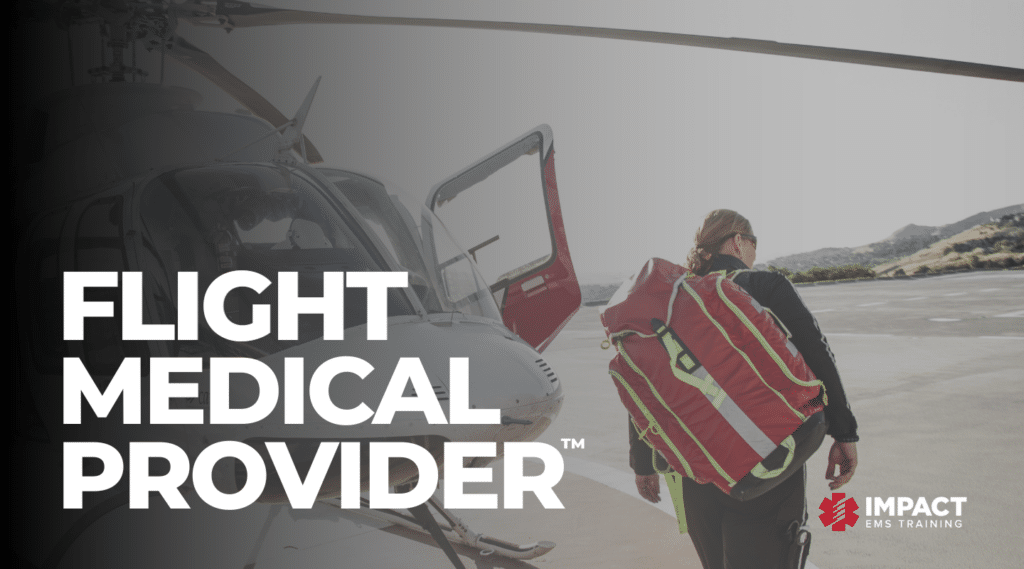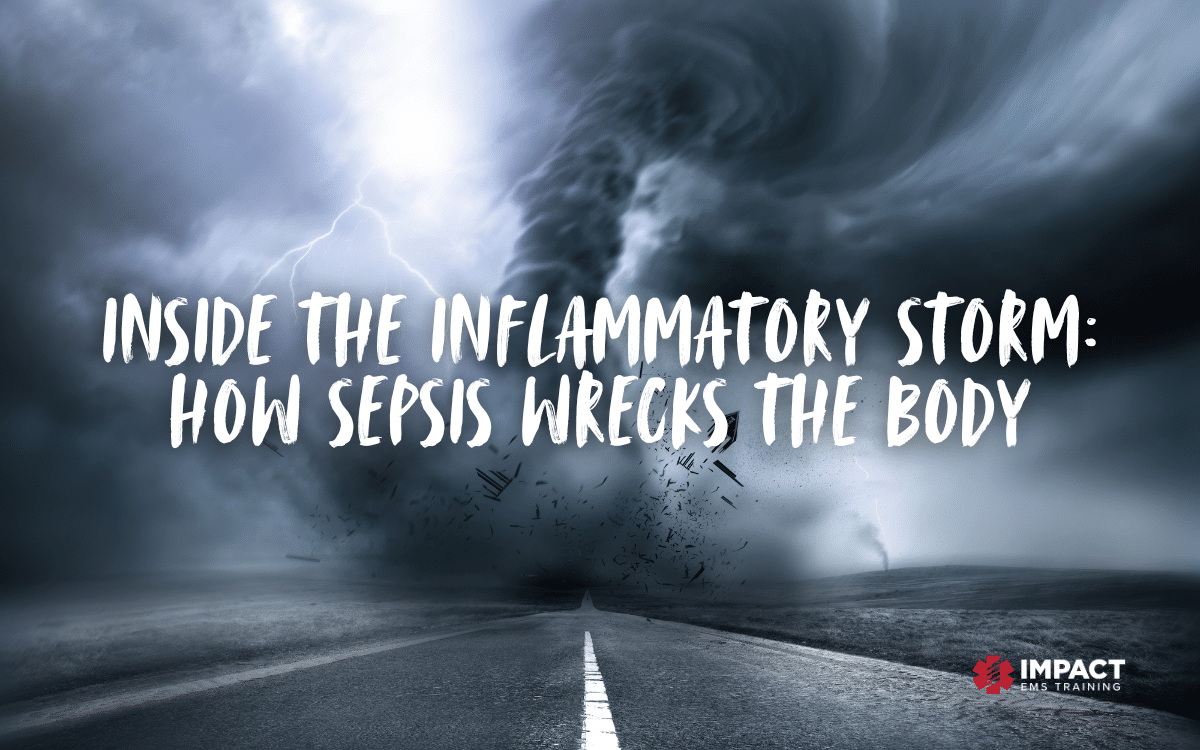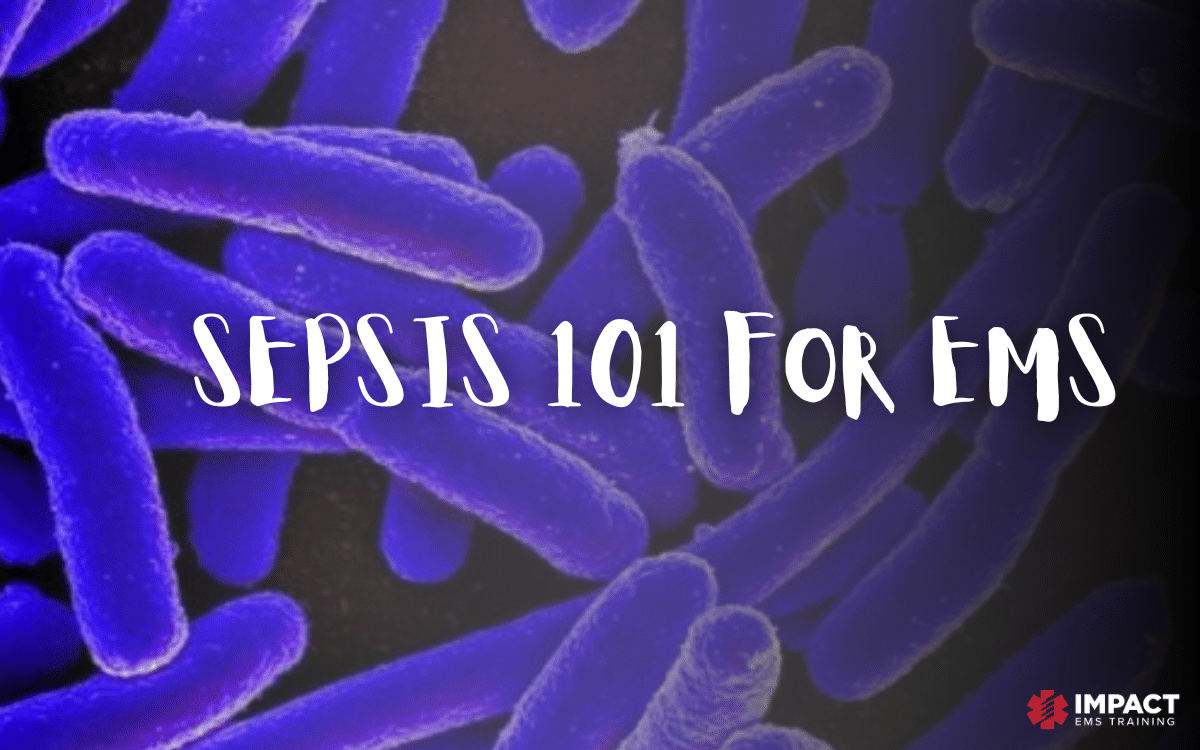A sepsis diagnosis doesn’t come with lights or sirens. But once early signs appear, it’s time to act fast. Each minute and each milliliter you administer makes a measurable difference in patient outcomes.
Why EMS Has a Critical Role in Sepsis Survival
Sepsis survival is all about timing. Hospital protocols rely on early antibiotics, fluid resuscitation, and lactate checks. But EMS providers often represent the earliest link in this chain, and research proves it matters.
One study found that prehospital antibiotic administration cut ICU stays and reduced the need for blood products¹. Another review noted a 19% reduction in relative mortality risk when antibiotics were started in the field².
Your early recognition and action aren’t transport. In this case, they’re treatment.
Step One: Recognize and Declare Early
If your patient meets SIRS or qSOFA criteria with suspected infection, begin using the words: “possible sepsis.” This doesn’t just inform, it helps activate.
Research shows hospitals deliver antibiotics over 50 minutes faster when EMS reports sepsis³. Early notification correlates with improved timeliness in receiving sepsis-focused care⁴.
Say it. Write it. Watch how fast hospital teams mobilize.
Step Two: Fluid Resuscitation. How Much Is Too Much?
Current guidelines recommend 30 mL/kg of crystalloids in the first three hours (Surviving Sepsis Campaign⁵. That’s ~2,100 mL for a 70 kg adult, though EMS crews typically manage 500–1,000 mL en route. It’s enough to reverse early shock without causing overload.
Initiate fluids when:
• MAP < 65 mmHg or SBP < 100
• Cap refill > 2 seconds
• Signs of hypoperfusion (confusion, cool skin, low urine output)
Monitor closely: Listen for crackles and track vitals. Too much fluid can kill.
When to Be Cautious: CHF, Renal, and Fluid-Overloaded Patients
Not everyone benefits from a full fluid load. Patients with these conditions need a gentler touch:
• Congestive heart failure: May need 250 mL boluses with careful reassessment
• Chronic kidney disease or ESRD: Fluid tolerance is low, especially pre-dialysis
If in doubt:
• Focus on supportive care
• Prioritize fast transport
• Document your reasoning for fluid decisions
Medications and Vasopressors: What EMS Should Know
EMS providers with critical care training may carry vasopressors like norepinephrine. Research shows prehospital norepinephrine administration to raise MAP > 65 mmHg is linked to improved 30-day survival⁶.
Recommended dosing:
• Start norepinephrine at 0.01–0.05 mcg/kg/min
• Add vasopressin or epinephrine if needed
Vasopressors without adequate fluids can worsen shock. Volume first unless contraindicated.
Antibiotics in the Field: Yes, No, or It Depends?
Not all EMS providers carry antibiotics, but some flight units do, based on confirmed source, protocols, and longer transport times. What matters most is speed: every one-hour delay increases mortality by 7–10% (Surviving Sepsis Campaign)⁵.
Even without antibiotics, your role remains critical: rapid transport to definitive care saves time.
Handoff Strategy: What to Say, What to Emphasize
A stellar handoff primes the receiving team to act fast. Include these essentials:
- “This is a suspected sepsis patient”
- SIRS/qSOFA met and documented
- Fluids given (amount, type, timing)
- Infection history, meds, recent fevers
- Mental status changes
- Risk factors (e.g., diabetes, chemo, immunosuppression)
Ask how their sepsis protocol works. Two-way communication builds trust and faster care.
Your actions make a difference. Every fluid you give, every word you use, and every detail you relay can save hours.
Sepsis is a race against time. EMS can shorten that race. Stay proactive, stay prepared, and remember: “possible sepsis” is not a casual diagnosis. It really can save lives.
References:
- Edwards AM. Prehospital antibiotics improve morbidity and mortality of sepsis. Prehosp Emerg Care.2023;27(2):199-207. https://pmc.ncbi.nlm.nih.gov/articles/PMC10324699
- Smith J et al. Septic shock in the prehospital setting: a scoping review. J Emerg Med. 2024;56(4):345-352. https://pmc.ncbi.nlm.nih.gov/articles/PMC11566175
- Johnson K. Early recognition of sepsis through EMS prehospital screening. JEMS. 2015.
- Marion N, et al. Survival rates improve when EMS calls out sepsis. Prehosp Emerg Care. 2016;20(1):122-128.
- Surviving Sepsis Campaign guidelines. Intensive Care Med. 2021;47(11):1181-1247. https://en.wikipedia.org/wiki/Sepsis
- Dupont A, et al. Prehospital norepinephrine reduces 30-day mortality in septic shock. BMC Infect Dis. 2022;22:349. https://bmcinfectdis.biomedcentral.com/articles/10.1186/s12879-022-07337-y




